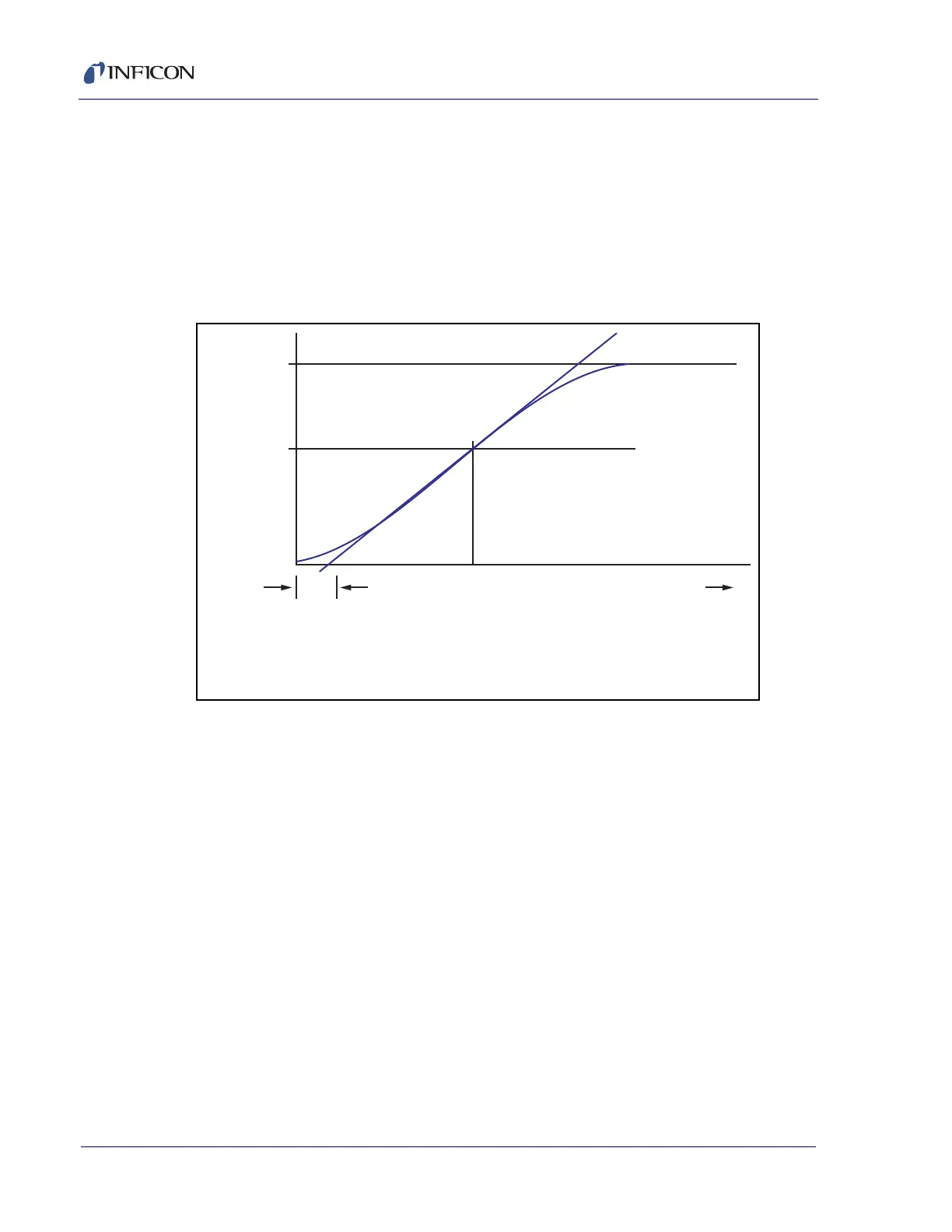8 - 10
XTC/3 Operating Manual
Three parameters are determined from the process reaction curve. They are the
steady state gain, K
p
, the dead time, L, and the time constant, T
1
. Several methods
have been proposed to extract the required parameters from the system response
as graphed in Figure 8-7. These are: a one point fit at 63.2% of the transition (one
time constant); a two point exponential fit; and a weighted least-square-exponential
fit. From the above information a process is sufficiently characterized so that a
controller algorithm may be customized.
Figure 8-7 Response of process to an open loop step change
(at t=0 control signal is increased)
A controller model used extensively is the PID type, shown in Laplace form in
equation [6].
[6]
Where
M(s) = manipulated variable or power
K
c
= controller gain (the proportional term)
T
i
= integral time
T
d
= derivative time
E(s) = process error
Figure 8-8 represents the controller algorithm and a process with first order lag plus
a dead time. The process block implicitly includes the dynamics of the measuring
devices and the final control elements, in our case the evaporator power supply.
T
1
= t
(0.632)
- L
K
p
=
(Change in Output) / (Change in Control Signal)
Point of
Maximum
Slope
1.00
K
p
K
p
0
L
t
(0.632)
Time, t
0.632
Ms K
c
1
1
T
i
s
------- T
d
s++
Es=
